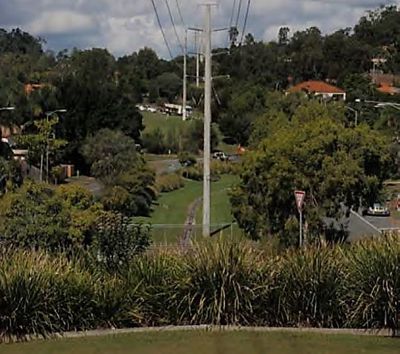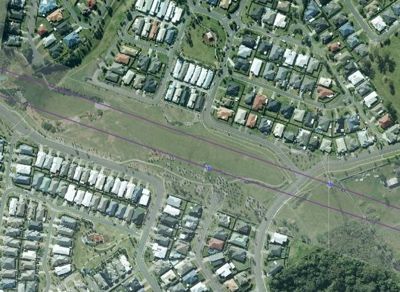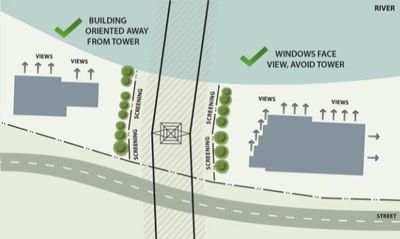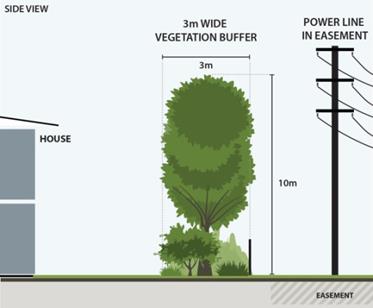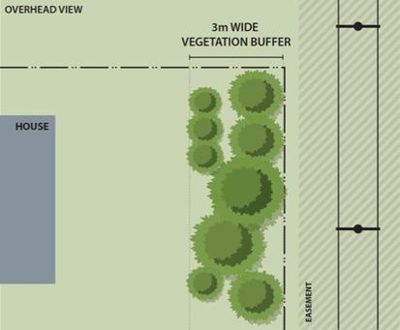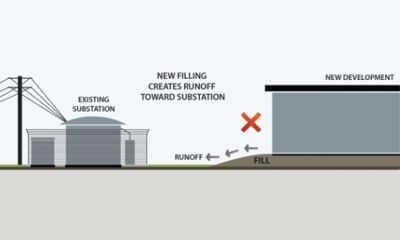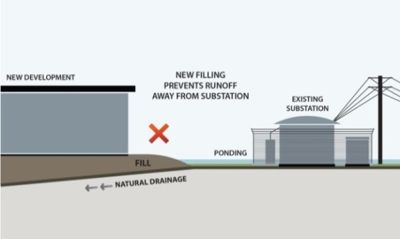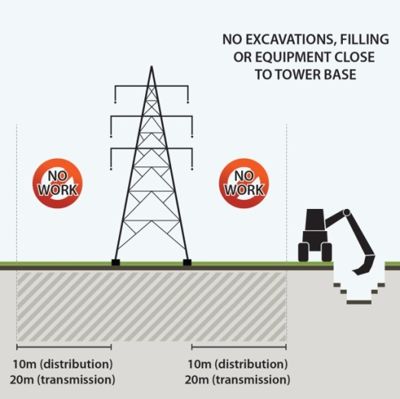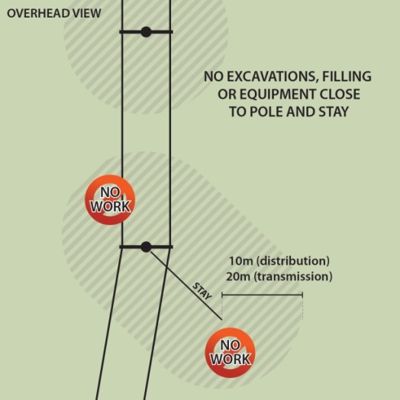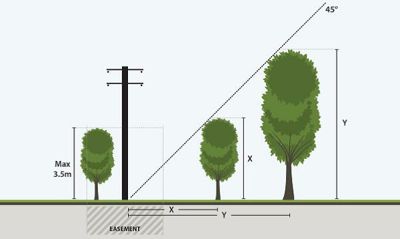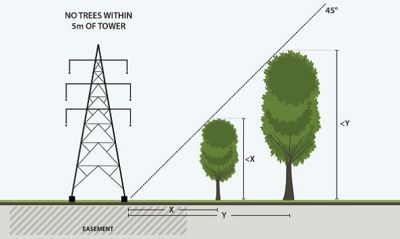Version 1 - Superseded Planning Scheme
- Citation and commencement
- Part 1 About the planning scheme
- Part 2 State planning provisions
- Part 3 Strategic framework
- Part 4 Local Government Infrastructure Plan (LGIP)
- Part 5 Tables of assessment
- Part 6 Zones
- Part 7 Local plans
- Part 8 Overlays
- Part 9 Development codes
- Part 10 Other plans
- Schedule 1 Definitions
- Schedule 2 Mapping
- Schedule 3 Local Government Infrastructure Plan (LGIP) mapping and tables
- Schedule 4 Notations required under the Sustainable Planning Act 2009
- Schedule 5 Land designated for community infrastructure
- Schedule 6 Planning scheme policies
- Appendices
8.2.10 Regional infrastructure
8.2.10.1 Application
This code applies to development where the code is identified as applicable in the table of assessment for the Regional infrastructure overlay code. When using this code, reference should be made to section 5.3.2 and where applicable, section 5.3.3 located in Part 5.
8.2.10.2 Purpose
- The purpose of the Regional infrastructure overlay code is to protect regionally significant infrastructure from nearby development that is sensitive to, or creates a risk for the infrastructure, and to protect nearby development from the potential impacts of the infrastructure.
- The purpose of the code will be achieved through the following overall outcomes:
- Infrastructure requirements are integrated in master planning and subdivision of newly developing areas, including new neighbourhoods.
- Effective separation and interface treatment is provided to major infrastructure sites and corridors to avoid risk to people and property and to minimise noise, odour and visual impacts.
- Easy access is provided to and along major infrastructure sites and corridors.
- Development does not compromise the safe and efficient operation, maintenance or expansion of major infrastructure.
- Existing and planned regional infrastructure facilities and corridors are protected from encroachment by sensitive land uses or incompatible development.
- Development does not create any threat to the provision of a safe and reliable supply of services to all users, and avoids any potential interference with the ongoing operation, maintenance and augmentation of the infrastructure.
- Development does not increase the potential for safety concerns, nuisance and complaints and minimises the need for measures to be introduced in the operation of the infrastructure to reduce potential impacts on surrounding areas.
- Development minimises overlooking of and visual exposure to the infrastructure sites and corridors.
- Development over or near major electricity and bulk water supply infrastructure does not compromise or interfere with the integrity of the infrastructure.
8.2.10.3 Assessment criteria
Table 8.2.10.3.1—Assessable development
| Performance outcomes | Acceptable outcomes |
|---|---|
| Reconfiguring a lot | |
|
PO1 Reconfiguration of lots does not compromise or adversely impact upon the efficiency and integrity of major electricity and bulk water supply infrastructure networks. |
No acceptable outcome is nominated. |
|
PO2 Lot reconfiguration integrates major infrastructure sites and corridors within the overall layout. In particular, the neighbourhood design:
|
No acceptable outcome is nominated. Note—Applicants should consult with the electricity providers early in the master planning process to determine electricity infrastructure requirements. |
|
PO3 Landscaping is provided which substantively assists in screening and softening poles, towers or other structures and equipment associated with major infrastructure. |
AO3 A minimum 5m wide densely planted landscaped buffer is provided, including provision for advanced trees and shrubs that will grow to a minimum height of 10m. Note—Applicants may find further guidance in Powerlink's "Screening your home from powerlines – A guide for planting trees and shrubs outside of easements to screen powerlines". |
|
PO4 Development within a water supply pipeline and buffer identified on the Regional infrastructure overlay map:
|
AO4 Buildings and structures (other than those associated with electricity infrastructure) are setback a minimum of 10m from a water supply pipeline as identified on the Regional infrastructure overlay map. |
|
PO5 Where the reconfiguration involves a major electricity infrastructure corridor, the corridor is incorporated within a useable public open space network wherever possible. |
No acceptable outcome is nominated. |
|
PO6 Where major electricity infrastructure is located within public open space, the dimensions and characteristics of the open space area are sufficient to accommodate the electricity easement or site, in combination with compatible recreational facilities and landscaping, so that:
|
No acceptable outcome is nominated. Note—The figures below provide an example of a well–integrated transmission corridor.
|
|
PO7 Where major electricity infrastructure is located in a road:
|
No acceptable outcome is nominated. |
| Material change of use | |
|
PO8 Development does not increase risk to community health or safety, or the operation and reliability of major electricity or bulk water supply infrastructure. |
No acceptable outcome is nominated. |
|
PO9 Development involving a sensitive land use is sufficiently separated from major electricity or bulk water supply and wastewater infrastructure to minimise the likelihood of nuisance or complaint. |
For electricity infrastructure. AO9.1 Buildings (other than class 10 buildings) maintain a setback of at least:
|
|
For water or wastewater treatment plants AO9.2 Sensitive land uses are not established or intensified within the buffer of a water or wastewater treatment plants identified on the Regional Infrastructure Overlay Map. |
|
|
PO10 Development avoids potential noise nuisance from substations. |
AO10 Noise emissions do not exceed 5db(A) above background noise level at the facia of a building measured in accordance with AS 1055. |
|
PO11 Other than where they are separated from the infrastructure by a road, buildings are oriented to avoid direct overlooking of major electricity infrastructure or substations. |
No acceptable outcome is nominated. Note—The figure below provides an illustration of buildings oriented away from infrastructure.
|
|
PO12 Development includes sufficient space within the site to establish landscaping which substantively assists in screening and softening poles, towers or other structures and equipment associated with major electricity infrastructure and substations. |
AO12 A minimum 3m wide densely planted landscaped buffer is provided along the boundary adjoining the major electricity infrastructure, including provision for advanced trees and shrubs that will grow to a minimum height of 10m. Note—The figures below provide an example but are not drawn to scale. Applicants may find guidance in Powerlink's "Screening your home from powerlines – A guide for planting trees and shrubs outside of easements to screen powerlines". Applicants should also note that vegetation will need to maintain statutory clearances (refer Ergon's Standard for Vegetation Management and Standard for Vegetation Clearance Profile.) Applicants should also note that vegetation will need to maintain statutory clearances (refer Ergon's Standard for Vegetation Management and Standard for Vegetation Clearance Profile)
|
|
PO13 Major electricity or bulk water supply infrastructure within private land is protected by easement in favour of the service provider. |
AO13 Existing easements are maintained and where none currently exist, new easements are created which are sufficient for the provider's requirements. |
|
PO14 Development does not compromise or adversely impact upon the efficiency and integrity of major electricity and bulk water supply infrastructure networks. |
AO14 For bulk water infrastructure, buildings and structures (other than those associated with electricity infrastructure) are setback a minimum of 20m from a water supply pipeline. No acceptable outcome for major electricity infrastructure. |
| Operational works and infrastructure | |
|
PO15 Development within a water supply infrastructure buffer is located, designed and constructed to:
|
AO15 Development does not involve works within a water supply infrastructure buffer. |
|
PO16 Earthworks do not restrict access to substations or to and along major electricity infrastructure by the electricity providers, using their normal vehicles and equipment. |
No acceptable outcome is nominated. |
|
PO17 There is no worsening of flooding, drainage or erosion conditions affecting the infrastructure. |
No acceptable outcome is nominated. Note—The figures below illustrate the concept.
|
|
PO18 Development maintains the clearances required under schedules 4 and 5 of the Electrical Safety Regulations 2002. |
No acceptable outcome is nominated. |
|
PO19 Any earthworks are undertaken in a way which:
|
AO19.1 No earthworks are undertaken:
Note—The figures below illustrate the concept.
|
|
AO19.2 No earthworks are undertaken, or other loading or displacement of earth caused, within the easement of an underground power line. |
|
|
PO20 Other services and infrastructure works (such as stormwater, sewerage, water and the like) do not impact on the safety and reliability of substations or major electricity infrastructure. |
AO20.1 Underground services are not located within 20m of a tower, pole, stay or substation boundary. |
|
AO20.2 No valve pits occur within:
|
|
|
AO20.3 Pipelines with cathodic protection systems, comply with part 11 of Electrical Safety Regulation 2013. |
|
|
AO20.4 Underground services traversing an easement, cross at right angles to the overhead or underground lines. |
|
|
AO20.5 Trenches for services are backfilled to be compacted in 150mm layers to at least 95% modified dry density compaction ratio. |
|
|
AO20.6 Trenches under construction are not left open overnight. |
|
|
PO21 Vegetation does not pose a risk to the safety or reliability of electricity infrastructure. |
AO21.1 Vegetation planted within an easement of an overhead power line or, where there is no easement, the area of influence of a power line, has a mature height of no more than 3.5m. |
|
AO21.2 Vegetation planted within an underground power line easement does not have a mature root system in >150mm depth and is not located directly over the power line. |
|
|
AO21.3 Vegetation adjoining easements complies with the clearance dimensions illustrated in the figure below.
|
|
|
AO21.4 Planting complies with (as relevant to the infrastructure concerned):
|
|



